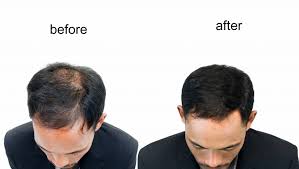Determining the donor area for a hair transplant is a critical step in the planning process, as it directly impacts the success and outcome of the procedure. The donor area is the region from which healthy hair follicles are harvested for transplantation to the areas of hair loss. Here’s how the donor area is typically determined:
- Scalp Donor Area: In most cases, the primary donor area for a hair transplant is the back and sides of the scalp, which are typically resistant to genetic hair loss (androgenetic alopecia). These areas are referred to as the “permanent zone” or “safe zone” because the hair follicles here are less susceptible to the hormone dihydrotestosterone (DHT), which is responsible for hair loss in genetically predisposed individuals.
- Assessment of Donor Hair: During the initial consultation, the hair transplant surgeon will carefully evaluate the donor area. They will assess the density of hair in this region, the quality of hair follicles (e.g., thickness and texture), and the overall health of the scalp.
- Photographic Documentation: The surgeon may take photographs of the donor area from various angles to document the current hair distribution, hairline, and the availability of suitable donor hair.
- Estimation of Grafts: Based on the assessment, the surgeon will estimate the number of grafts (individual hair follicles or groups of follicles) that can be safely and effectively harvested from the donor area. This estimation is crucial for planning the transplant procedure.
- Designing the Hairline: The surgeon will also discuss and design the recipient area (the area where the hair will be transplanted) with the patient. This includes determining the hairline design, density, and distribution to achieve a natural look.
- Hair Density Considerations: Donor hair density varies from person to person. Some individuals have a high density of hair in the donor area, allowing for a greater number of grafts to be harvested. Others may have lower donor hair density, which could limit the number of grafts that can be safely extracted.
- Future Hair Loss: Surgeons also consider the possibility of future hair loss when determining the donor area. They aim to preserve enough donor hair for potential future transplant sessions, should additional coverage be desired.
- Alternative Donor Sources: In cases where the scalp donor area does not provide enough grafts, alternative sources such as body hair (e.g., chest or beard hair) may be considered for advanced or corrective procedures.
- Patient’s Goals: Ultimately, the determination of the donor area is based on a combination of the patient’s goals, the surgeon’s assessment, and the availability of suitable donor hair.
It’s important to note that a skilled and experienced hair transplant surgeon plays a crucial role in assessing and planning the donor area to ensure the best possible results. During the consultation, the surgeon will discuss the donor area, expected outcomes, and the overall hair transplant plan with the patient to establish realistic expectations and achieve the desired aesthetic goals.
For more information, Consult Dr. Deepam Shah practicing at Viva Aesthetic Clinic as he considered Best Hair transplant in Mumbai.



